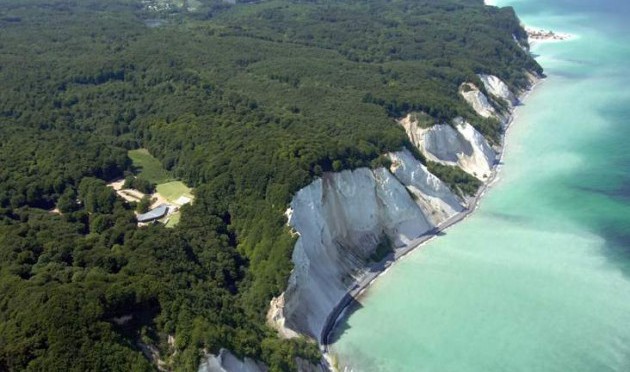Pierwsze 3km biegu, po znanej na pamięć trasie, zasuwam na luzie, wsłuchany w audiobook’a, jednak za zakrętem tracę wątek powieści… widzę, że padł kawał lasu – konkretna wycinka. Zwalone i już pocięte pnie leżą wzdłuż jednego kilometra podbiegu, zapach intensywny, ale widok smutny – jak trumny.
[foto tytułowe – Dania – kredowe klify, 130 m wysokości – źródło: http://turystyka.wp.pl ]
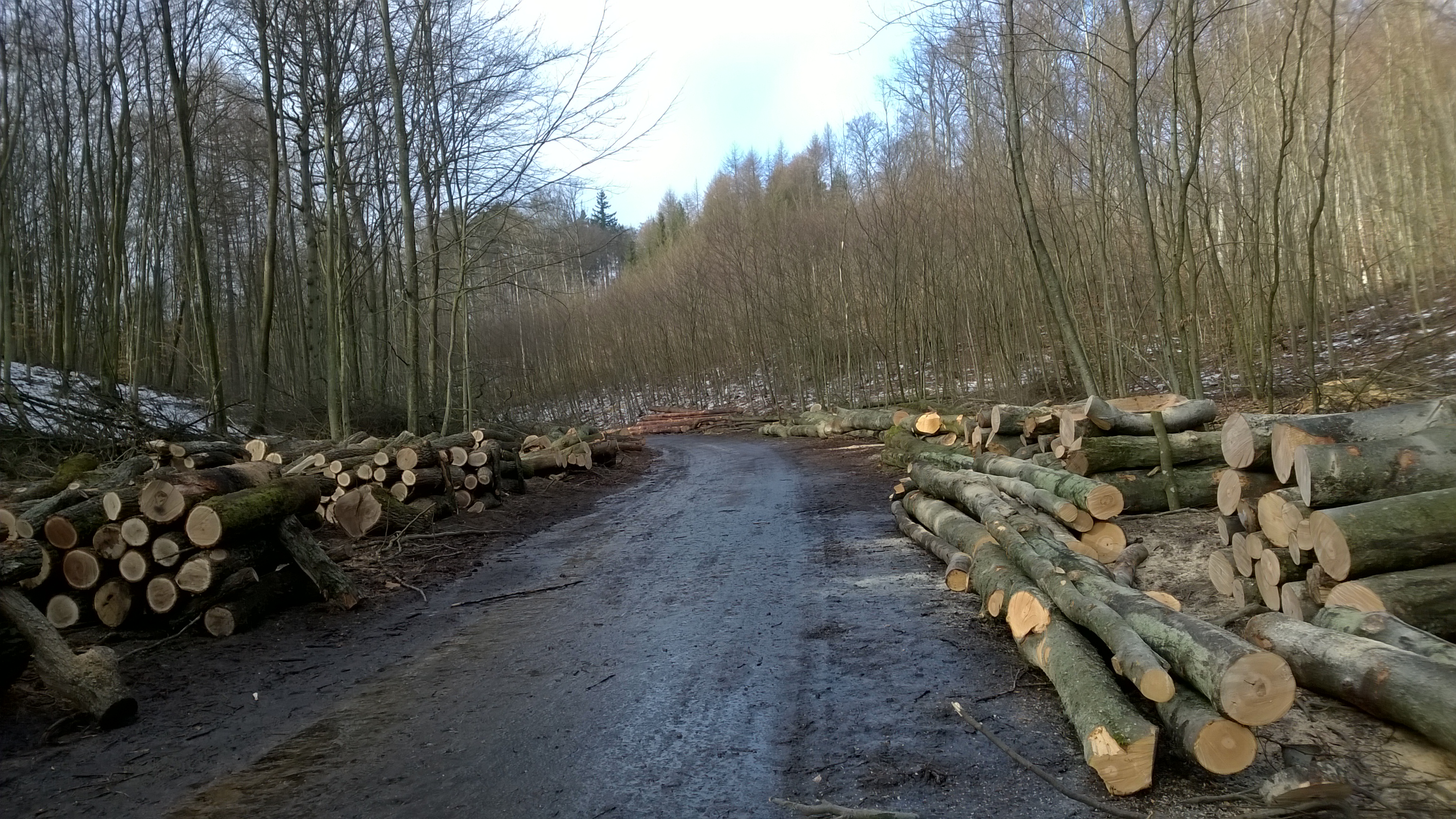
Okazuje się, że kary za wycięcie dębu, buka, lipy itd.. wynoszą ok. 90 zł za 1 cm obwodu pnia – a tu klocki po 100-150 cm, więc po obliczeniach wychodzi do 13000 zł od drzewa. Nie chce mi się liczyć, ale przy drodze leży trochę kasy. Gdzieś u góry wzgórza widzę druciany płot i nowe nasadzenia – odbudowa drzewostanu rozpoczęta, tylko kto w tym czasie zajmie się dwutlenkiem węgla (CO2) i co to ma do globalnego ocieplenia?
Było o zlodowaceniach, naszej ewolucji, wichurach ratujących dorsza, więc i z tym warto się zmierzyć, a pytanie jest ważne – ścinając drzewa szkodzimy czy nie szkodzimy? Dlaczego USA i Chiny nie podpisały protokołu z Kioto (97r) dotyczącej redukcji gazów cieplarnianych?
Chciałem zacząć od podstaw, że słońce pali o 25% silniej niż w momencie powstania układu słonecznego i w związku z tym powinniśmy wyparować, ale nic takiego się nie wydarza, że okrzemki pływające w morzu wychwytują CO2 i wiążą z wapniem (Ca) tworząc swoje muszelki. Z tego mamy nazwę ery, która jakieś 65 mln lat temu zostawiła nam wielkie pokłady kredy, która wita nas w Dover pięknym białym klifem, a w Normandii inspiruje mistrzów pędzla.
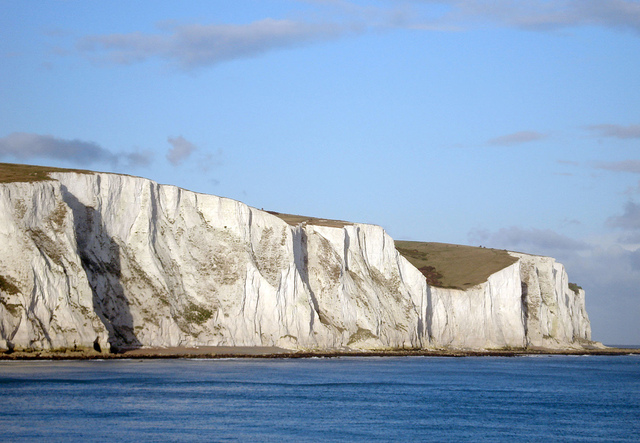
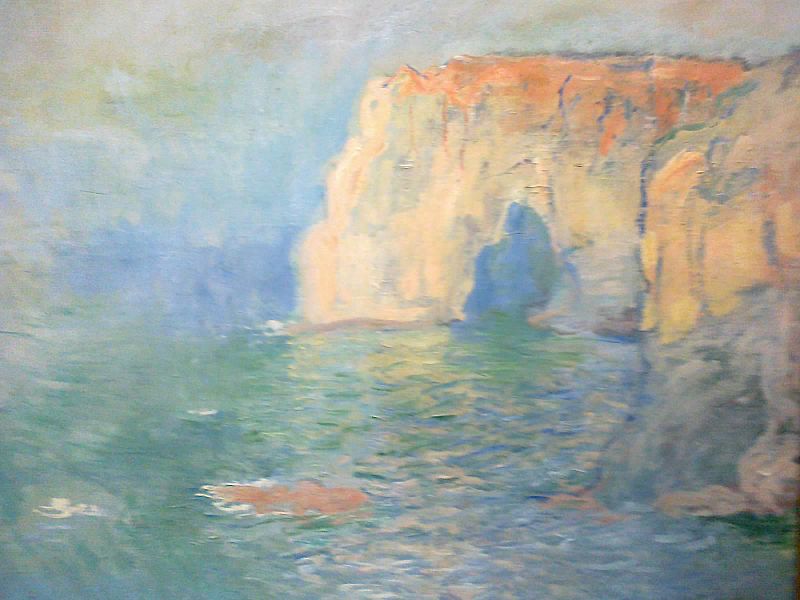
Niestety jestem bezradny, zmiany klimatyczne w przeszłości były tak wielkie, że opis cyklu węgla, w tym CO2 wymagałaby objętości książki. Były okresy – np. w karbonie, kiedy wybujała roślinność produkowała tyle tlenu, że organizmy weszły w okres gigantyzmu – owady np. osiągały prawie wielkość bocianów, a nieco wcześniej procesy wulkaniczne były tak intensywne, że obrazki z Tolkienowskiego Mordoru to pikuś, do tego stężenie CO2, metanu i tym podobnych gazów było zabójcze. Trzeba wiedzieć, że pełny, naturalny cykl, który pokonuje pierwiastek węgla – erupcją wulkaniczną do atmosfery, stąd powrót z deszczem do oceanów i na ląd, tu związanie organiczne w formie wapieni, czy pokładów kopalin (gaz, ropa, węgiel, torf) i czekanie na windę marki ‘wulkan’ – trwa 500 mln lat. Wyobraź sobie, że w ziemskich skałach jest 20 000 razy więcej węgla niż w atmosferze, czyli natura musiała przetrawić ogromne nadwyżki CO2 i zmagazynowała go w skorupkach organizmów wodnych, które tworzyły dno mórz . Reszta gazu stale i nadal krąży , ale pytanie jest takie – jak my się do tego przykładamy? Trochę i tylko trochę, czyli w około 4% tego co natura sama wprowadza do atmosfery. Problemem jednak jest to, że cykl obiegu w naturze jest mniej więcej zrównoważony, a my dodajemy extra gazu – jak zapisano w Kioto – złego cieplarnianego gazu i dlatego pojawiło się hasło redukuj, albo płać. Póki co wydaje się, że natura jednak daje radę, a pakiet klimatyczny, to głównie skuteczne narzędzie do sprzedaży „zielonych” technologii, Ja to nazywam globalnym ekstra podatkiem. Gazy cieplarniane, czyli nasz bohater CO2, metan, ozon i inne, smrodzą ale czy grzeją? Okazuje się, że najwięcej ‘grzeje’ woda – tak tak, para wodna odpowiada za podgrzewanie atmosfery w 95-99%, ale nie jest uwzględniona w pakiecie gazów z Kioto. Po przeliczeniu ponownym okazuje się, że dostarczany ekstra przez nas (antropogeniczny) CO2 odpowiada zaledwie za 0,07%-0,2% wzrostu temperatury. Przeciwnicy tej teorii wskazując na sprzężenie zwrotne (CO2 podgrzewa wodę) oraz fakt, że CO2 zalega dłużej i wyżej niż para, oskarżają antropogeniczny CO2 o przyczynę 1,3% wzrostu temperatury przy zachmurzonym niebie. Ciekawe dlaczego USA i Chiny, najwięksi emitencie dwutlenku węgla, nie złożyli podpisu pod traktatem? Sprawa się jednak komplikuje, bo 2-3 lata temu Rosja i Kanada sygnalizowały chęć rezygnacji z obostrzeń, a USA i Chiny wspomniały o chęci zmniejszenia emisji i podpisania nowego traktatu – rozkraczyły się stanowiska, nie ma co. Pamiętacie szczyt klimatyczny w Warszawie z 2013? Otóż miano wypracować parametry pod nowy traktat mający zastąpić Kioto – będzie jeszcze radykalniej – Paryż 2015 przed nami.
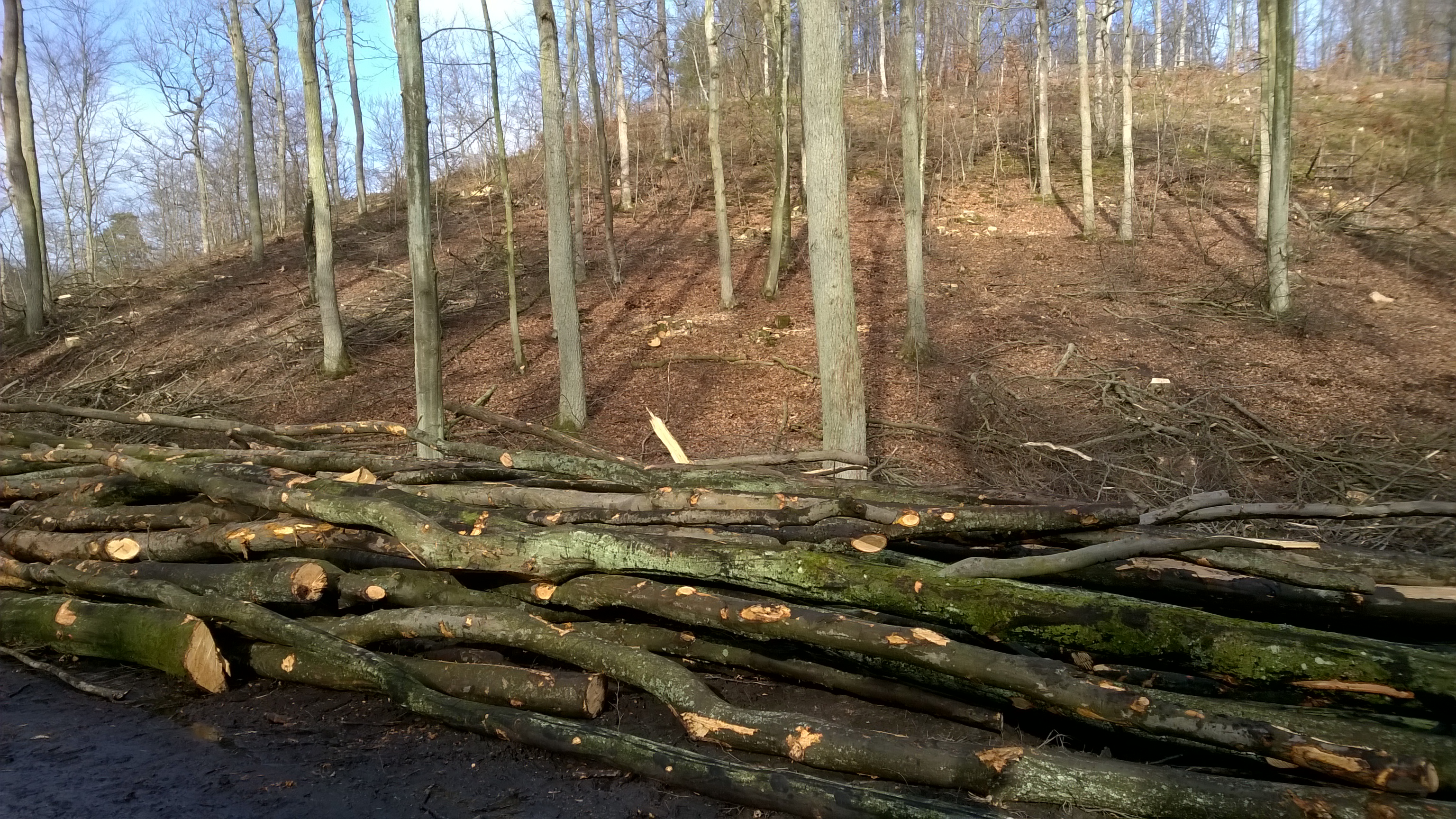
Przesuwam się dość szybko, w tempie 5’10”/km pod górę i patrzę na pobojowisko z większą łaskawością, tym bardziej, że obsadzanie nowymi drzewami ma następujący skutki – młode drzewo znacznie silniej od starego pochłania CO2, gdyż intensywnie rośnie – więc taka zamiana jest korzystna. Niekorzystne są lokalne i chwilowe zmiany ekosystemu dla innych organizmów, czasem nawet lokalnego mikroklimatu oraz wycinki, które uniemożliwiają odtworzenie. Biegnę dalej choć nie jest mi wesoło, bo Polska podpisała nie tylko Kioto – roczne ograniczenie emisji do 551mln t CO2, ale również limit unijny – 208 mln t, dwa razy bardziej restrykcyjny. Pomyślisz „cholera – robią nas w double Kioto” – i chyba za bardzo nie błądzisz. Boje się, że Paryż 2015, to będzie triple Kioto – i jak się nad tym zastanawiam to wychodzi mi jedno, światowi decydenci chcąc zwiększać podatki muszą wprowadzić nowe, nadrzędne, najlepiej śmiertelnie groźne argumenty – padło na CO2 – więc zapłacimy więcej.
Pozostaje pytanie czy można coś zrobić z tym realnym efektem cieplarnianym wywoływanym przez parę wodną? Parowania wód naszej planety nie zmniejszymy, ale możemy sadzić drzewa, które pochłaniają dwutlenek węgla, ale również świetnie wiążą wodę ograniczając parowanie. Obliczono, że aby skompensować cel zmniejszenia emisji CO2 w UE wystarczyłoby zwiększyć powierzchnię europejskich lasów o 3,4%, a przeliczając tylko dla terytorium Polski o 2,2%. Mówimy tylko o dwutlenku węgla a parę wodną wiążemy gratis.
Translation Anna Meysztowicz
17. What does C02 have to do with global warming?
The first 3 km of running along a well-known route, I move along relaxed, listening to an audiobook, however after turning I lose track of the story – I can see that part of the forest has been cut down – a significant portion. The felled and already cut-up trunks lie along one kilometre of the running track, the scent in the air intense but the sight sad – like caskets. It turns out that fines for cutting down oak, linden and beech trees, etc. amount to approx. 90 zl per 1 cm of circumference of the trunk – and here there are chunks of up to100-150 cm, so upon calculation it comes up to 13,000 zl per tree. I don’t want to count but there’s a lot of money lying here by the road. Somewhere higher up the hill I see a wire fence and new seedlings – the reconstruction of the forest has started but who will take care of the carbon dioxide in the meantime, and what has this got to do with global warming?
I have previously written about the ice ages, our evolution, and winds that save the cod, so this is also worth facing, and the question is an important one – by cutting down trees, are we or are we not causing harm? Why have the US and China not signed the Kyoto Protocol (from 1997) concerning the reduction of greenhouse gas emissions?
I want to start with the basics, that the sun is burning 25% stronger than at the time the solar system came into existence and, therefore, we should all evaporate, but nothing of the sort is happening, that the diatoms swimming in the sea capture the CO2 and bind it with calcium (Ca) creating their shells. From this we have the name of the era that, some 65 million years ago, left us immense layers of limestone, which greet us in Dover with beautiful white cliffs, and inspire master painters in Normandy. Unfortunately I am helpless, climate changes in the past were so great that the description of the cycle of carbon, including CO2, would take up an entire book. There were periods – e.g. the carbon era, when the abundant flora produced so much oxygen that the organisms entered the period of gigantism – for example insects became nearly as large as swans, and slightly earlier the volcanic processes were so intense that images of Tolkien’s Mordor are nothing, and the concentration of CO2, methane and other similar gasses was lethal. It needs to be understood that the full natural cycle that is defeated by carbon – the eruption of the volcano into the atmosphere, the return from there with rain into the oceans and onto the land, organic binding here in the form of limestone, or mineral deposits (gas, crude oil, coal, peat) and waiting for the “volcano” brand elevator takes 500 million years. Imagine that, in the earth’s rocks, there is 20,000 times more carbon than in the atmosphere, i.e. nature must have survived enormous surpluses of CO2 and stored it in the shells of water organisms that created the seabeds. The remaining gas continues to circulate but the question remains – how are we contributing to this? Only a little bit, i.e. around 4% of what nature itself introduces into the atmosphere. The problem remains that the cycle in nature is more or less balanced and we add extra gas – as written in Kyoto – bad, greenhouse gas, and that is how the slogan appeared – reduce or pay. For now it seems that nature is somehow managing on its own and the climate package is chiefly a successful tool for the sale of “green” technologies. I call this an extra global tax. Greenhouse gases, i.e. our hero CO2, methane, ozone and others, stink but do they heat? It turns out that water causes the most “heat” – yes, that’s right, water vapour is responsible for heating the atmosphere in 95-99%, but is not taken into consideration in the package of gases from Kyoto. Upon recalculation it turns out that the extra CO2 supplied by us (anthropogenically) is responsible for an increase in temperature of just 0.07-0.2%. Opponents of this theory point out the cause and effect (CO2 heats water) and the fact that CO2 lingers longer and higher than vapour, which they attribute to the anthropogenic CO2 causing 1.3% of the increase in temperature with a cloudy sky (H2O). It is interesting that the US and China, the largest emitters of CO2, did not sign the treaty. The matter is complicated, however, by the fact that, 2-3 years ago, Russia and Canada signalled the wish to resign from the restrictions, yet last year both the USA and China mentioned the wish to lower emissions and sign a new treaty – there is no denying that opinions differed here. Do you remember the climatic summit in Warsaw in 2013? The intention was to elaborate parameters for a new treaty that was to replace Kyoto – but things are about to get more radical – Paris 2015 lies ahead.
I am moving along quite quickly, at a tempo of 5.10 km uphill, and I look at the battlefield with more clemency, especially as the planting of new trees has the following effect – young trees absorb CO2 much more intensely than the old as they grow more intensively – so such a change is beneficial. What is harmful are the local and momentary changes to the ecosystem for other organisms, sometimes even the local microclimate, and logging that does not enable recreation. I run on although I am far from happy because Poland has signed not only the Kyoto Protocol – an annual restriction of emissions to 551 million tonnes of CO2, but also the EU limit – 208 million tonnes; twice as restrictive. You may think “Hell, they’re turning us into a double Kyoto” – and you wouldn’t be wrong here. I’m afraid that Paris 2015 will be a triple Kyoto – and when I ponder this I come to just one conclusion – global decision-makers wanting to increase taxes must introduce new, superior and, best of all, lethally threatening arguments – this is CO2 – so we will pay more.
The question remains of whether we can do anything with this real warming effect caused by vapour? We will not decrease the evaporation of water on our planet but we can plant trees that absorb carbon dioxide and also absorb water well, limiting evaporation. It has been calculated that, in order to compensate the goal of limiting CO2 emissions in the EU it would suffice to increase the surface area of European forests by 3.4%, and calculating this just for the territory of Poland – by 2.2%. This only concerns CO2, we bind water vapour for free.
